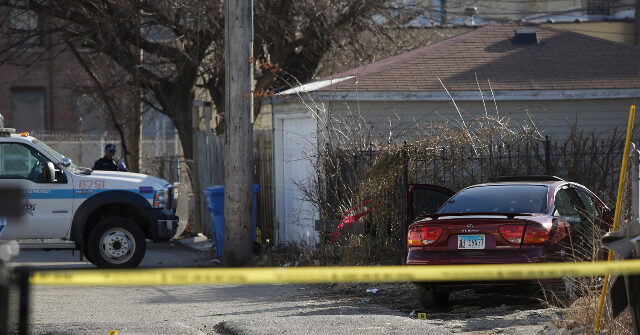The manhunt started after 10 inmates escaped from the jail in New Orleans in mid-May, squeezing through a narrow hole behind a toilet and disappearing into the city. Most were tracked down quickly, and the search soon focused on a single holdout who managed to stay on the run for months.
It ended on Wednesday, 145 days after the escape and nearly 500 miles from the jail. The 10th man, a convicted murderer named Derrick Groves, was captured after a brief standoff with the police in Atlanta, officials said.
Law enforcement officials said they had discovered Mr. Groves, 28, at a house in southwest Atlanta, where he was taken into custody by federal marshals and the city police. Officials had offered a $50,000 reward for information leading to his capture. Crimestoppers of Greater New Orleans said in a statement on Wednesday that it had received tips that helped lead investigators to Mr. Groves.
The escape provoked anger and alarm in New Orleans, putting the management of the jail under intense scrutiny as the public questioned how so many inmates charged with violent offenses — including murder, armed robbery and domestic abuse — were able to break free.
Much of the fear was tied to Mr. Groves, who had already been convicted of four murders. Mr. Groves, who was awaiting a sentencing hearing at the time of his escape, faces a mandatory sentence of life in prison without parole after a shooting on Mardi Gras in 2018 that killed two people.
Some people with ties to his victims, or who had testified against him or worked as lawyers on the case, fled their homes and even the city after his escape, terrified of retaliation, officials said.
“His capture brings long-awaited calm to victims, their families, the witnesses who testified, the assistant district attorneys who prosecuted him and the people of New Orleans,” Jason Williams, the district attorney for New Orleans, said in a statement on Wednesday.
The escape began just after midnight on May 16, with the group of inmates pulling a metal toilet from the wall of a cell and squeezing through the gap behind it. One of the men left a misspelled message taunting his jailers: “To easy lol.” At 1 a.m., a security camera captured them jumping from a loading dock and running away.
A civilian employee responsible for monitoring security systems in that section of the jail had left his station to get something to eat, officials said. Hours went by before the escape was detected.
One of the inmates was captured that day after a chase through the city’s French Quarter, not even two miles from the jail. The second and third were also tracked down the day of the escape. Two others were found in the following days in New Orleans.
Another turned up in Baton Rouge, roughly 80 miles away, and two more were tracked down in Huntsville, Texas, some 370 miles from New Orleans. The second-to-last inmate was found in New Orleans more than a month after the escape, after proclaiming his innocence in social media posts.
After the escape, the police arrested a maintenance worker at the jail, accusing him of turning off the water supply to the toilet so that the inmates could pull it from the wall.
Investigators said that the worker, Sterling Williams, had claimed that an inmate had threatened to “shank him” if he did not shut off the water, according to an affidavit. But a lawyer for Mr. Williams later said that the investigators had inaccurately characterized his client’s account. According to the lawyer, Mr. Williams had shut off the water after a sheriff’s deputy told him that a toilet was overflowing. It appeared the toilet had been intentionally clogged.
“He was merely a tool that the escapees used to further their plan — without his knowledge,” the lawyer, Michael Kennedy, said in an email to The New York Times shortly after the escape.
Relatives and friends of the inmates have also been arrested and charged with helping the escapees in various ways. One of them is a former jail employee who investigators said was an “on-again, off-again” girlfriend of Mr. Groves’s.
But many in New Orleans, including officials overseeing the jail, had argued that the escape reflected the facility’s failings, where faulty locks, a camera system plagued by issues and insufficient staffing allowed such a brazen jailbreak to succeed.
“We are operating with outdated surveillance, aging infrastructure, blind spots in supervision and critical staffing shortages,” Susan Hutson, who oversees the jail as the Orleans Parish sheriff, said at a City Council hearing not long after the escape. “These vulnerabilities have been raised repeatedly in our funding requests, and now, the consequences are undeniable.”
Rick Rojas is the Atlanta bureau chief for The Times, leading coverage of the South.
The post Last of 10 Escapees From New Orleans Jail Is Captured in Atlanta appeared first on New York Times.




